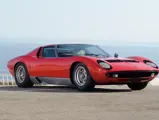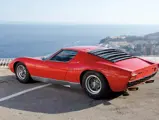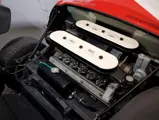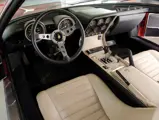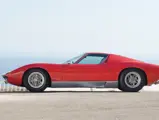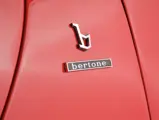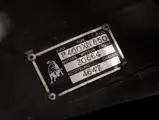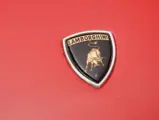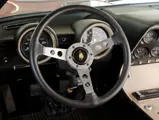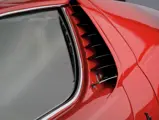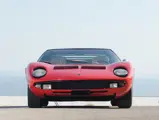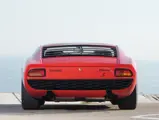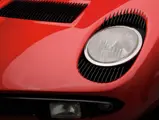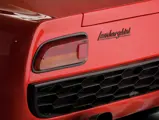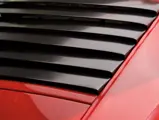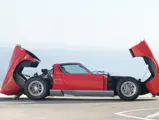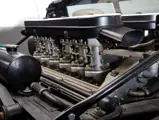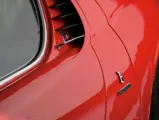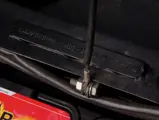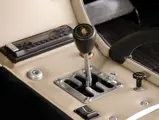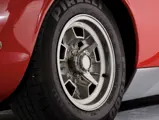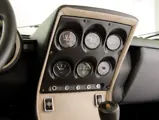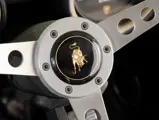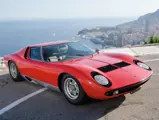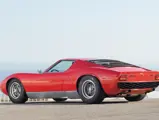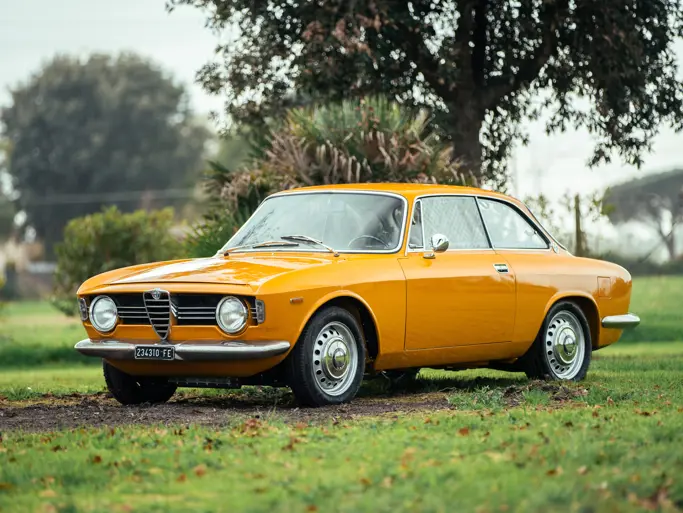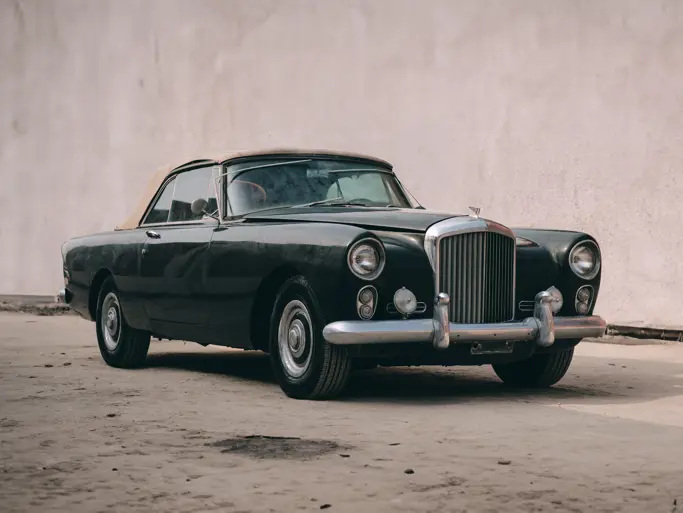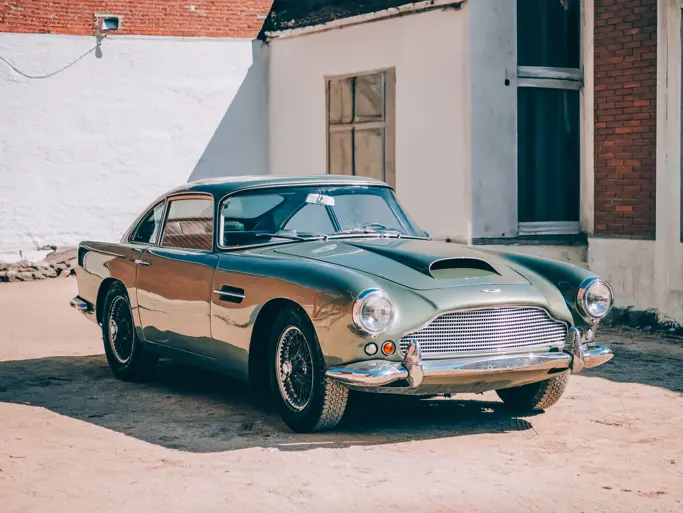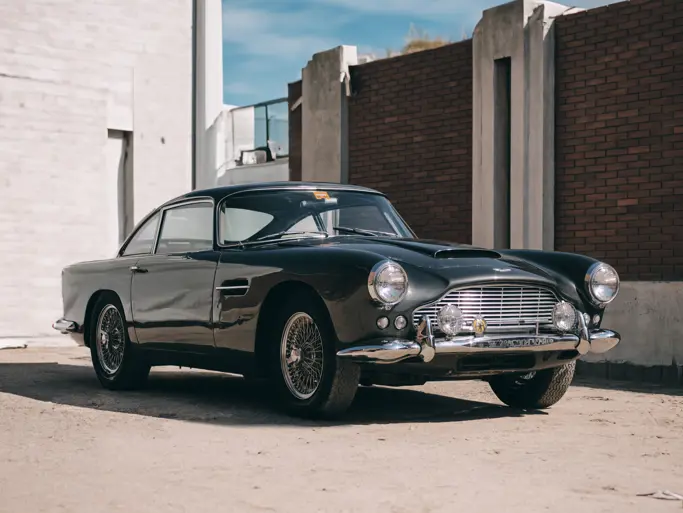London 2012
1970 Lamborghini Miura P400S
{{lr.item.text}}
£397,600 GBP | Sold
 | London, United Kingdom
| London, United Kingdom
{{internetCurrentBid}}
{{internetTimeLeft}}

370 hp, 3,929 cc DOHC transverse V-12 engine with Six Weber twin-choke carburettors, five-speed manual transaxle, independent front and rear suspension by coil springs and unequal length wishbones, and four-wheel hydraulic disc brakes. Wheelbase: 98.4 in.
• Sold new by Paris Monceau with rare air-conditioning option
• Very late production example with matching numbers
• Recent engine rebuild and repaint in original Rosso Corsa
The Lamborghini Miura is generally considered to be the world’s first supercar. Other candidates, especially the Mercedes-Benz 300SL Gullwing, have their adherents, but they tend to be rather conservative in appearance or are barely disguised race cars, like Ford’s GT40. The Miura is unapologetically extravagant and was absurdly fast compared to commuter cars of the day. It was the over-the-top styling and dazzling colours that also gave much pleasure to people who just stood and stared at it. The Miura’s specifications are still noteworthy today: a 350 horsepower DOHC V-12 and a top speed of 180 mph, which continues to draw a crowd wherever it is parked.
Lamborghini eased into performance car production with the conservative 350 GT of 1964, but nobody was expecting the Miura when the doors to the Geneva Motor Show opened on 10th March 1966. Named after a famous Spanish breeder of fighting bulls, it fits the marque’s raging bull emblem to a tee. The orange-red, mid-engine coupé drew crowds throughout the show and even more acclaim a few months later when it was adopted as the course car for the Monaco Grand Prix, with local hero Louis Chiron waving the chequered flag out the window.
The original 1966 Miura was a product of passion and engineering excellence. The designers, Giampaolo Dallara, Paolo Stanzini, and Bob Wallace, were in their 20s. Dallara and Stanzini were engineers, Wallace an expert Maserati mechanic, and they all admired Colin Chapman’s lightweight unitized construction and Eric Broadley’s mid-engined Lola, which had evolved into the Ford GT40. Together with designer Marcello Gandini, they designed the model with its transverse V-12 engine, complex aircraft-quality construction, front and rear clamshells, and plain go-to-hell brilliance.
Miura production can be divided into three phases. The early Miura P400 had a few shortcomings, but they were forgiven by enthusiastic owners who loved the noise and speed. The P400 evolved into the second generation P400S in 1968, with slightly better interior and ventilated disc brakes on the late cars. A roadster was toyed with and one was actually built, but Wallace had other ideas. He wanted to go racing. The original 1970 Jota model was a one-off test bed to see if a competition car would fit into the FIA’s Appendix J. The result was a complete racing car with an aluminium semi-monocque shell riveted over a steel chassis. Horsepower was bumped to 440 and the weight was trimmed to 1,784 pounds. Wallace reused the powertrain of the Miura with all the third-generation 1971 SV upgrades. Although the improvements were substantive, time was marching on, and the Miura SV was practically ignored at the 1971 Geneva Auto Show, which featured the prototype of the Countach.
The Miura P400S on offer today is a matching-numbers example with a fully documented provenance. It was sold new by Voitures Paris Monceau on 28th August 1970, in Rosso Corsa with black leather interior and the rare Borletti air-conditioning option. In 1970, it was registered in the South of France in the Alpes Martimes region. The Miura Register next records it in Belgium in 2002, indicating 70,000 kilometres. Around October of 2003, it had received a chassis restoration and wider nine-inch SV rear wheels.
In early-2012, this car received a thorough engine rebuild, after which the car was thoroughly inspected by an RM specialist in Bareggio, near Milan, Italy. It was confirmed that the car is a matching-numbers example in its original Rosso Corsa colour and has a new tan leather interior. Its newer paint is very good, and the adjustment of the doors and the front and rear clamshell bonnets are correct.
When the Miura was driven in Italy, it started instantly and ran smoothly even when cold. Oil pressure is good, with 8 bars cold/5.5 bars hot (115/80 lbs.), and the engine runs strongly and smoothly throughout its range. The clutch is light and the gearbox shifts easily, with the synchromesh effective between all five gears, going up the box or down. All dashboard gauges work correctly, the steering is direct with no free-play, and the car brakes perfectly straight from speed. The suspension is tight with no clunks or rattles, and both electric windows work correctly. Low slung, distinctly designed, and engineered to look and drive like no other, the Miura is a true thoroughbred and is the only car of the early-1970s that can rival the mighty Ferrari in both looks and performance. This example is a lovely car that will always be admired and desired, and it will undoubtedly provide for years of exciting ownership.

